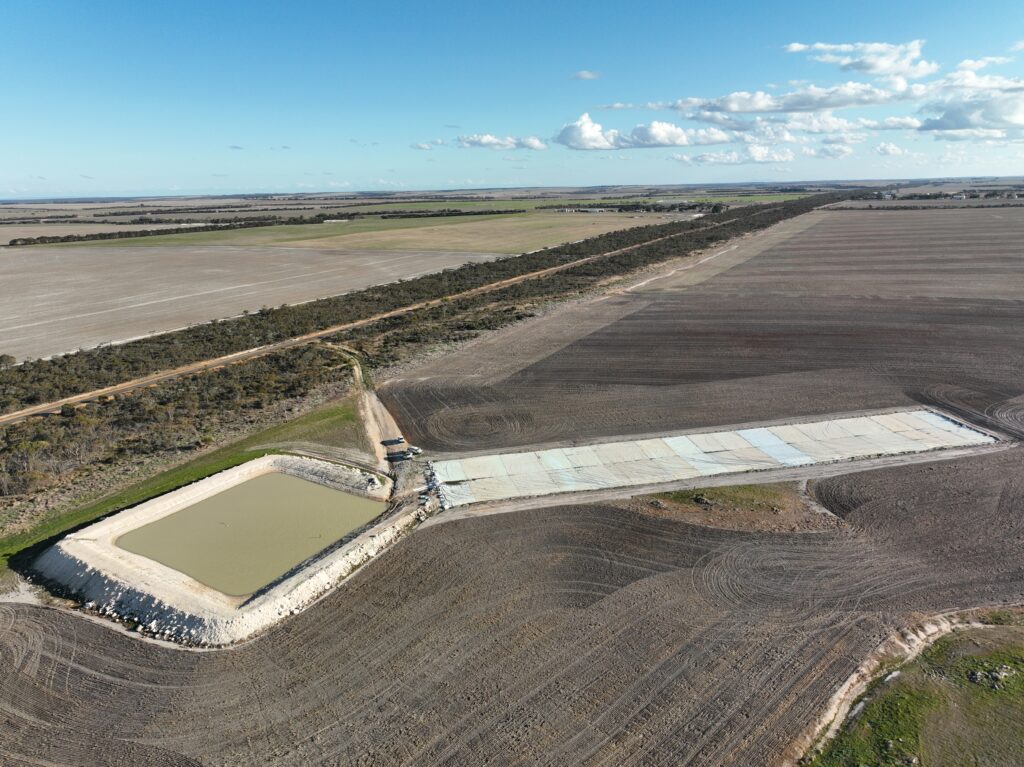
The Fitzgerald Biosphere Group (FBG) connected with Jacup grower Mark Lester for this trial and was one of the first sites to be implemented focusing on water catchment efficiency. Initial funding from a portion of the WA Government’s $3.7M program to expand and enhance off-farm strategic dams, it was directed through Department of Water and Environmental Regulation (DWER) to establish the site.
South West NRM’s Sustainable Agriculture Team was on the road this month, in collaboration with Facey Group and Southern Dirt, running workshops on drought-proofing farms in the southern Wheatbelt.
Water security and quality has been an increasing concern for farmers since the early 1900s when a rising water table bought salt to the surface.
But concern is changing to opportunity with the emergence of desalination.
The Desalination Opportunity
Desalination of local water supplies is being explored by DPIRD’s WaterSmart farms project to help farmers take water security into their own hands.
The project is investigating optimal on-farm desalinisation, assessing technology, economics, water sources, and reject water disposal.
The Drought-Proofing Roadshow showcased two examples of local desalination plants.
Both stakeholders reported the price of desalinating their own water was comparable to the price of scheme water.
However, with the cost of scheme water expected to rise in the future and technologies emerging to make desalination more efficient, the idea of having your own desalination plant on site was looking good.
New technology for water capture
The Roadshow also looked at technologies to capture more water in dams. Research fellow, Bonny Stutsel, has been working on the WaterSmart Dams project focusing on what farmers can do right now to “get more water into dams and keep it there”.
The project has 12 grower-led demonstration sites from Merredin to Jerramungup.
The biggest takeaway from this project? Roaded catchments are essential to get more water into dams.
A roaded catchment is where a farmer fits a compacted clay surface to a dam.
Bonny said: “Department guidelines say a well maintained roaded catchment will start to run with 8-12mm of rain but with competing demands on the farm, maintenance can be neglected and in reality it is more likely on the higher end of that.”
Local farmers in the room agreed they were seeing water enter their dams after about 12-20mm of rain.
But in some years of course, there are very few >10mm rainfall events. So how can we improve the capture of water from lower rainfall events?
One WaterSmart Dams site trialled using modified grain tarps stitched together and laid on top of the catchment area.
This system started running water at about 1mm of rain and increased water capture into the dam by about 50%.
The limiting factor is as this system gets more popular, grain tarps are harder to come by, and there is limited capacity for contractors to stitch them together.
If you are considering putting in a tarped catchment SEPWA have put together a short video.
Keeping the water in dams
Once you have a high-performing catchment, it is time to consider how to keep the water in your dam.
Modified pool covers have been shown to effectively decrease evaporation loss by about 40%.
Vegetating the windward side of the dam will also reduce evaporation loss with the vegetated farm dam studied reducing evaporation by about 30%.
In other trials, Hexacovers have shown to be ~73% effective, but due to being cost-prohibitive to landholders they were not used in WaterSmart Dams project.
Evaluating water needs
With all this information, how do you plan what will be optimal for you on your farm relative to your operational demand?
The WaterSmart Dam team have developed the Water Evaluation Platform – a simulation tool utilising local weather and climate data to help you understand how big your catchment needs to be to meet your demand.
Keen to try the new dam and catchment planning platform before its June launch?
Get in touch with the UWA team by emailing cwss@uwa.edu.au
Find more resources on water capture via the below links.
South West NRM is the Bunbury Node of the South-West WA Drought Resilience Adoption and Innovation Hub and receives funding from the Australian Government’s Future Drought Fund.
The WaterSmart Dams project is jointly funded through the Australian Government’s Future Drought Fund and the Western Australian state government’s Agriculture Climate Resilience Fund, supported by the Department of Primary Industries and Regional Development (DPIRD).
